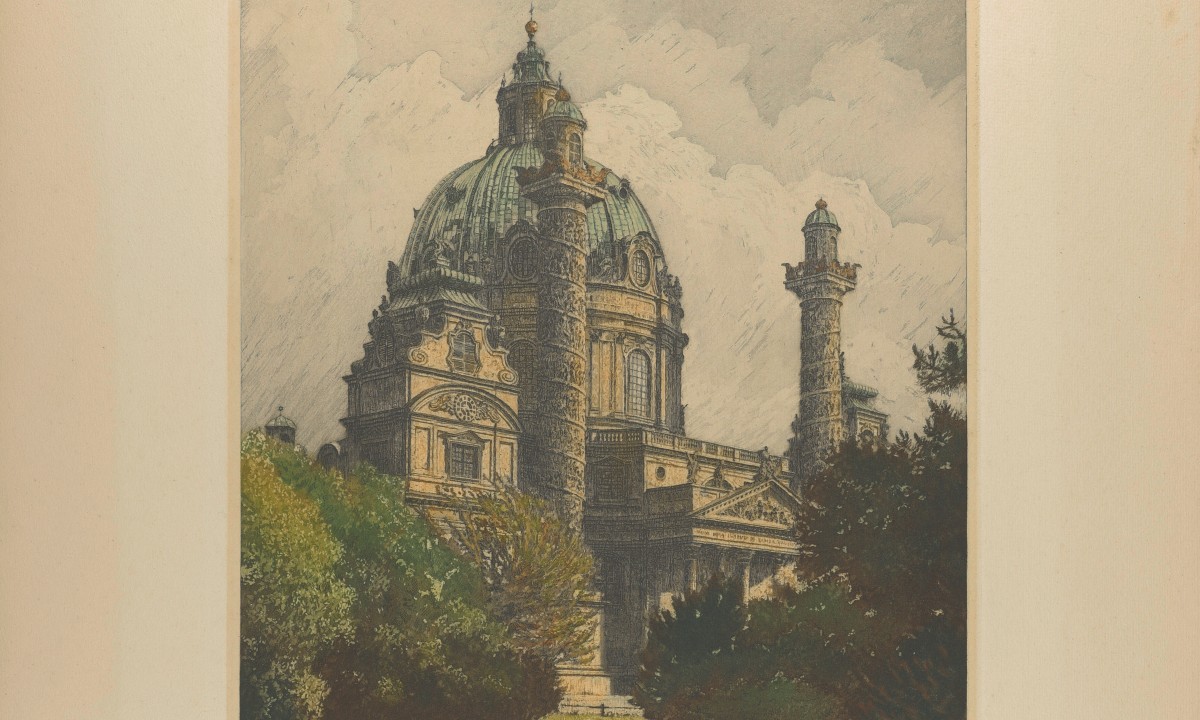Emil Singer’s etchings are pure #wienliebe. The Moravian-born Jewish artist knew how to capture his adopted city of Vienna from her best side. Not only tourists purchased his pieces, but also locals. As viewers gaze at his depictions of the charming alleyways of Schönlaterngasse or Sonnenfelsgasse, a wave of nostalgic “Alt-Wien” flair washes over them. This nostalgia is perhaps the reason why many feel drawn to Singer’s pieces. Or perhaps it was more for the fact that Singer depicted a Vienna without any “Wiener” clearly visible, fulfilling Georg Kreisler’s “Viennese-free” Vienna from his classic Wienerlied Wien ohne Wiener (1964).
As word got out that the Jewish Museum Vienna was preparing an exhibition featuring Emil Singer’s works, people from Austria and around the world got in touch with us. They have a Singer etching at home! Might it be useful for the exhibition? While space was rather limited for the small cabinet exhibition already, the offers inspired curators Caitlin Gura and Daniela Pscheiden to collect the owners’ stories. How did they come to acquire the Singer etchings? Was it a gift, a family heirloom? Did the owners have the piece on display or tucked away in a storage closet?
27. August 2024
Latest News
Share Your Singer – Connecting More Memories of Emil Singer
by Caitlin Gura
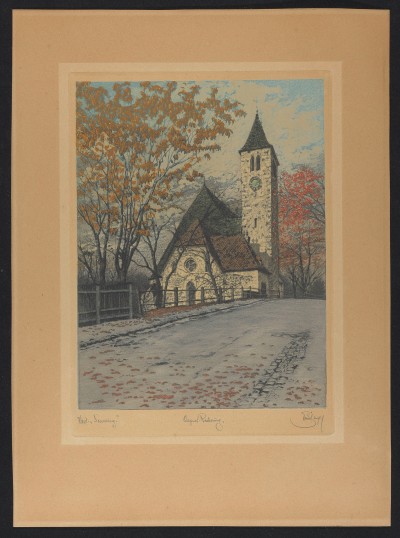
© Emil Singer, Wien: Sievering, etching, ca. 1930, donated by Dr. Sandy Rikoon
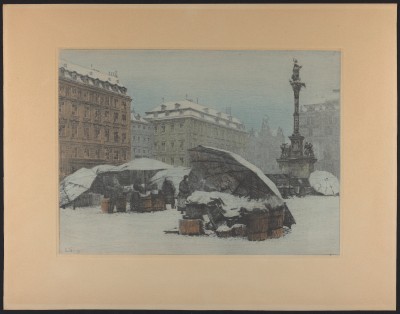
© Emil Singer, Am Hof, etching, ca. 1913, donated by Dr. Sandy Rikoon
The conversations with the owners revealed fascinating stories. A Viennese woman recalled how she received a Singer etching as gift upon the birth of her eldest son for Christmas in 1969. It was Singer’s rendering of Sievering. The piece meant much to her as her family had lived in this neighborhood for ages. She even worked there as midwife. Another story sent to the museum from Carinthia told about the discovery of a print of Singer’s first etching of Vienna Am Hof in the attic of an estate that was on auction. The dark irony of the story is that the estate belonged to an industrialist family who profited greatly under the Nazi regime.
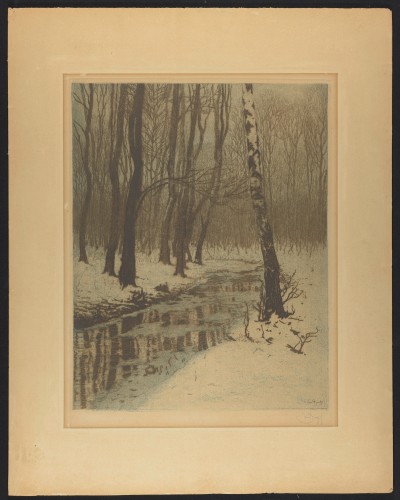
© Emil Singer, Waldbach im Schnee, etching, ca. 1913, donated by Henry Isaacs

Our colleagues at the library of the Jewish Community in Zurich (Israelitische Cultusgemeinde Bibliothek, Zürich) shared that a reader donated Singer’s print Waldbach im Schnee to their institution upon discovering it in a drawer at his parents’ house. The library staff were enamored with the quiet, wintry landscape and gladly accepted it. Only until later did they learn about the artist’s tragic murder in the Holocaust. They had it professionally framed and mounted in the library with a plaque commemorating the artist. Other owners purchased Singer’s works at auction or flea markets either as souvenirs of their trip to Vienna or as tokens of a memorable place in the city. A colleague at the Austrian Academy of Sciences acquired Singer’s Kirche bei der alten Universität, because it depicted his office building in which he worked for many years.
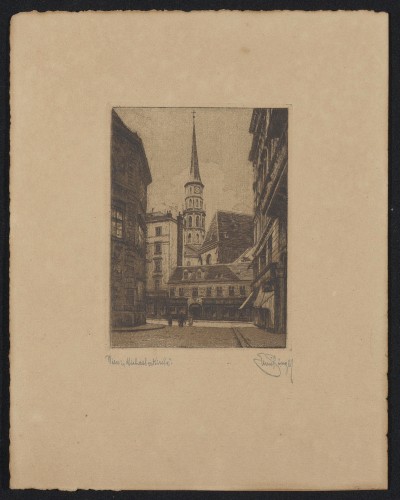
© Emil Singer, Wien: Michaelerkirche, etching, ca. 1923, donated by Henry Isaacs
Even curator Daniela Pscheiden owns an Emil Singer etching. Upon moving into her new home, she realized she needed to decorate the area around her staircase. At a flea market, there were several views of Vienna for sale. Singer’s Michaelerkirche etching spoke to her the most. Only after she started working on the cabinet exhibition, did she realize that her print was by Emil Singer.
Curator Caitlin Gura’s highlight from this project was meeting Harald Kaltenböck and Valeria Soleri at their home to interview them about their extensive collection of Emil Singer prints. After acquiring Axel Junghans’s self-published biography on the artist, they were inspired by the artist’s life and those who tried to save him in World War II. They began collecting Singer works in an effort to keep his memory alive in Vienna.
Overall, the “Share Your Singer” project shows a hopeful aspect to this heartbreaking Holocaust story. The Jewish Museum Vienna is not the only caretaker of Viennese Jewish history, but rather everyone who becomes inspired by his works. Emil Singer’s life was extinguished in the Holocaust, but his legacy thrives today thanks to collectors, biographers, historians, librarians, and you. Through these efforts, we connected even more memories of Emil Singer.
Sunday September 1 is the last chance to see Viennese Nostalgia. Connected Memories of Emil Singer. At 11:00 a special combination tour of this show as well as Who Cares? Jewish Responses to Suffering will take place with curator Caitlin Gura.
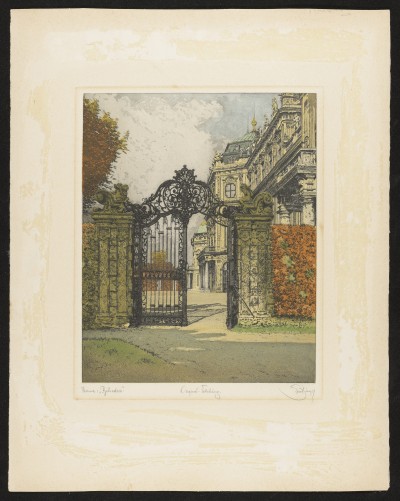
© Emil Singer, Vienna: Belvedere, etching, ca. 1930, donated by Henry Isaacs
